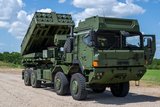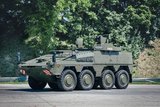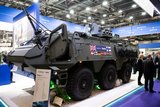GA-EMS details 10 MJ railgun testing progress
General Atomics Electromagnetic Systems (GA-EMS) has completed final assembly and factory acceptance testing of its 10 Mega Joule (MJ) medium range multi-mission railgun system, the company announced on 31 July.
The railgun will now be put through testing at Dugway Proving Ground in Utah.
The system has been designed to provide a multi-mission, multi-domain capability with greater flexibility and a smaller footprint for ship, land and mobile platforms.
The railgun system integrates a High Energy Pulsed Power Container (HEPPC), the 10 MJ launcher, hypersonic hybrid missile, and fire control technologies.
The HEPPC uses next-generation railgun capacitors and a new approach to packaging and distribution of the energy in a smaller footprint than existing pulsed power solutions. This reduces the number of pulsed power containers required to launch the projectiles or hybrid missiles.
GA-EMS conducted projectile component testing earlier this year. The testing also demonstrated a continuous two-way data link between the in-flight projectiles and the ground station.
More from Land Warfare
-
![Lithuanian 1st Division to achieve initial operating capability in 2026]()
Lithuanian 1st Division to achieve initial operating capability in 2026
Lithuania is one of the countries stepping up its defences in the face of the war in Ukraine with a particular focus on its neighbour and Russian ally Belarus, which has been making incursions into Lithuania’s airspace with balloons and drones.
-
![Beyond Survivability: How Active Protection Systems Are Empowering Commanders (Podcast)]()
Beyond Survivability: How Active Protection Systems Are Empowering Commanders (Podcast)
As threats diversify and intensify, APS are proving essential not just for vehicle protection but also for enhancing operational freedom, effectiveness and mission success in contested environments.
-
Medium knocked out of British Army LMP, with CAVS as heavyweight champion
As the British Army seeks to modernise and consolidate its diverse vehicle fleet, yet another change in direction is underway.






















